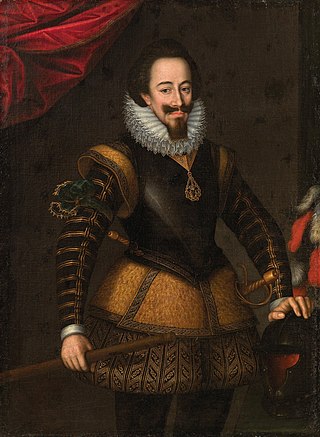
Charles Emmanuel I,known as the Great,was the Duke of Savoy and ruler of the Savoyard states from 30 August 1580 until his death almost 50 years later in 1630,he was the longest-reigning Savoyard monarch at the time,only for his record to be surpassed by his great-grandson Victor Amadeus II. He was nicknamed Testa d'feu for his rashness and military aggression.

Dom Guido Grandi,O.S.B. Cam. was an Italian monk,priest,philosopher,theologian,mathematician,and engineer.

The House of Foscari was an ancient Venetian patrician family,which reached its peak in the 14th–15th centuries,culminating in the dogeship of Francesco Foscari (1423–1457).
Paolo Casati was an Italian Jesuit mathematician. He belonged to the jesuit scientific school founded in the Provincia Veneta by Giuseppe Biancani,and represented later by NiccolòCabeo,NiccolòZucchi,Giovanni Battista Riccioli and Francesco Maria Grimaldi.
In textual and classical scholarship,the editio princeps of a work is the first printed edition of the work,that previously had existed only in manuscripts. These had to be copied by hand in order to circulate.
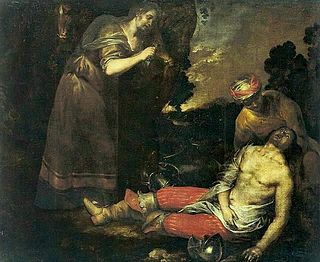
Luciano Borzone was an Italian painter of a late-Mannerist and early-Baroque styles active mainly in his natal city of Genoa.
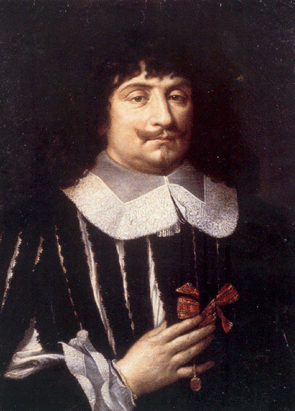
Fulvio Testi was an Italian diplomat and poet who is recognised as one of the main exponents of 17th-century Italian Baroque literature. He worked in the service of the d'Este dukes in Modena,for whom he held high office,such as the governorship of Garfagnana. Poetically,alongside Gabriello Chiabrera,he was the major exponent of the Hellenizing strand of Baroque classicism,combining Horatianism with the imitation of Anacreon and Pindar. His poems tackle civic themes in solemn tones,showing Testi's lasting anti-Spanish and,consequently,pro-Savoia political passions. Accused of treason for having tried to set up diplomatic relations with the French court,he was imprisoned and died in jail soon after. According to Giacomo Leopardi:
If he'd been born in a less barbarous age,and had had more time than he did to cultivate his talent,he would doubtless have been our Horace,and perhaps been hotter and more vehement and more sublime than the Latin man

Giuseppe Maria Figatelli or Giuseppe Maria da Cento was an Italian mathematician and Capuchin friar.

The Battle of Capo d'Orso,sometimes known as the Battle of Cava and the Battle of Amalfi,was a naval engagement taking place from 5:00 PM to 9:00 PM on April 28 1528,during the War of the League of Cognac. A French fleet inflicted a crushing defeat on the fleet of the Kingdom of Naples under Spanish command in the Gulf of Salerno,where Spanish forces trying to break the French blockade of the city met the French fleet.

The House of Barozzi was an aristocratic Venetian family that belong to the Venetian nobility. Members of the family became sailors,clerics and men of learning. They were lords of Santorini and Thirassia,and held military fiefs on the island of Crete. Members of the family were involved in the conspiracy of Bajamonte Tiepolo against the Doge of Venice in 1310.
Biagio Cusano was an Italian Marinist poet and professor of law. The date of his birth is currently unknown. He is best known for being Gennaro Cusano's uncle and Marcello Papiniano Cusani's grand uncle.
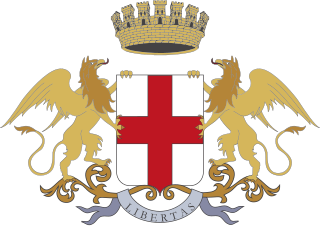
Lorenzo De Mari was the 157th Doge of the Republic of Genoa and king of Corsica.

Giovanni Battista Cicala Zoagli was the 63rd Doge of the Republic of Genoa.
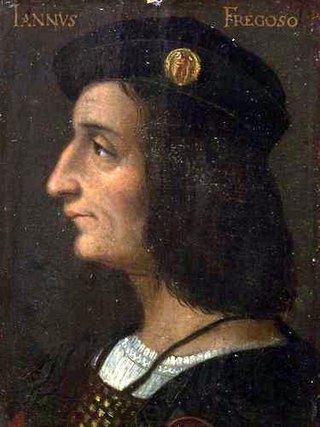
Battista Fregoso was the 40th Doge of the Republic of Genoa.
Giulio Cesare Vachero was a Genoese adventurer and conspirator. He gave his name to one of the most famous conspiracies hatched in the 17th century against the government of the Republic of Genoa.

The Querini family or Quirini was an old Venetian patrician family. They claimed an ancient Roman heritage,but their traceable history goes back to the 11th century. The family divided into many branches.

Enrico Narducci was an Italian librarian,bibliographer and paleographer.

Pandolfo Collenuccio was an Italian Renaissance humanist,Civil Servant and writer.
Marco Antonio Bonciari or Bonciario was an Italian Renaissance scholar and writer.
Giovanni Cinelli Calvoli was an Italian physician and bibliographer of the Seicento.














